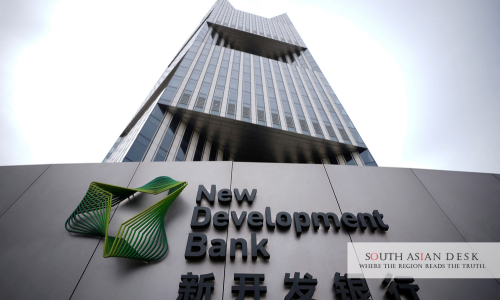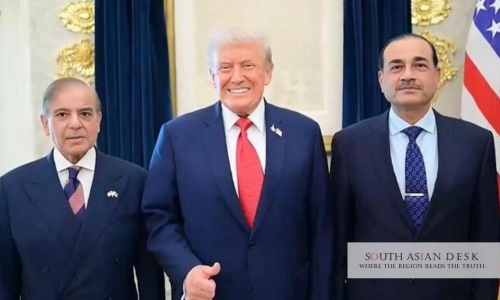India targets an ambitious 8% annual growth rate over the next decade to secure its vision of becoming a developed nation by 2047, the federal finance ministry has declared. Amid rising geopolitical uncertainties, the government is banking on robust domestic demand and increased investments to drive this transformative journey, according to a recent report presented to a parliamentary committee.
India Targets Navigating Geopolitical Uncertainties.
The finance ministry’s projection comes at a time when global trade tensions and geopolitical challenges are intensifying. The ministry estimates India’s economic growth for the current financial year, ending March 31, to range between 6.3% and 6.8%, aligning closely with last year’s 6.5% but falling short of the 9.2% recorded in 2023-24. To meet the 8% growth target, India must elevate its investment rate to 35% of GDP, up from the current 31%, a challenge that demands strategic policy interventions and private sector engagement.
Recent trade developments have added complexity to India’s economic outlook. The United States has imposed a 25% tariff on Indian goods, with an additional 25% levy for India’s purchases of Russian oil, potentially reducing growth by up to 40 basis points in the 2025-26 fiscal year. Earlier this month, trade negotiations between New Delhi and Washington faltered over India’s reluctance to open its agriculture and dairy markets, highlighting the delicate balance between domestic priorities and international trade relations.
Boosting Domestic Demand and Investment
To counter these external pressures, the Indian government is focusing on stimulating domestic demand through planned consumer tax cuts, building on personal tax reductions introduced in February. The Reserve Bank of India has also lowered interest rates by 100 basis points this year, aiming to encourage spending and investment. These measures are designed to bolster consumer confidence and fuel economic activity, particularly in urban and rural markets where demand has shown resilience.
The finance ministry’s strategy includes prioritising labour-intensive exports such as textiles, apparel, and leather goods to enhance India’s global trade position. By fostering these sectors, the government aims to create jobs and drive inclusive growth, addressing the needs of a young and dynamic workforce. Posts on X have echoed this sentiment, noting that sustained growth at 8% is critical for India’s long-term goal of developed nation status by 2047, a view consistent with the ministry’s parliamentary submission.
Structural Reforms for Long-Term Growth
Achieving an 8% growth rate requires more than short-term measures; it demands structural reforms to strengthen India’s economic foundation. The finance ministry has emphasised the need for increased investment in infrastructure, technology, and skills development to sustain momentum. Economists have underscored that consistent growth of 8% to 9% annually is essential to meet the 2047 target, a goal that aligns with India’s aspirations to rank among the world’s leading economies.
Despite global uncertainties, India’s domestic economy has shown resilience. Rural demand has rebounded, driven by agricultural recovery and rising sales in sectors like two-wheelers and tractors. Manufacturing and services sectors continue to perform strongly, supported by positive Purchasing Managers’ Index trends. However, challenges such as high food inflation, driven by supply chain disruptions, and cautious urban consumer sentiment regarding job prospects remain hurdles to overcome.
A Cautious Yet Optimistic Outlook
The finance ministry’s report reflects cautious optimism, acknowledging global risks while highlighting India’s robust macroeconomic fundamentals. The government’s focus on reducing public debt is expected to free up domestic savings for private investment, further supporting economic growth. As India navigates a complex global landscape, including potential tariff wars and geopolitical tensions, policymakers are urged to act swiftly to seize opportunities in trade and manufacturing.
India’s journey towards an 8% growth target amid geopolitical uncertainties is a high-stakes endeavour. With strategic reforms, enhanced domestic demand, and a focus on labour-intensive exports, the nation aims to solidify its position as a global economic powerhouse by 2047.
Published in SouthAsianDesk, August 19th, 2025
Follow SouthAsianDesk on X, Instagram and Facebook for insights on business and current affairs from across South Asia.






